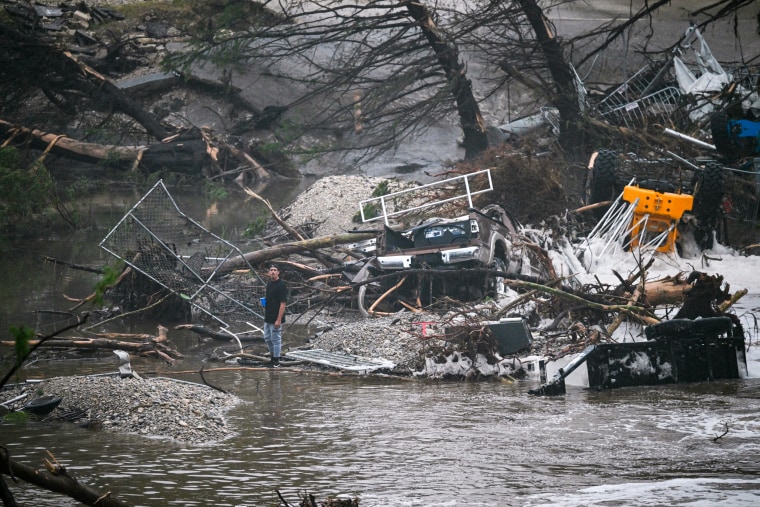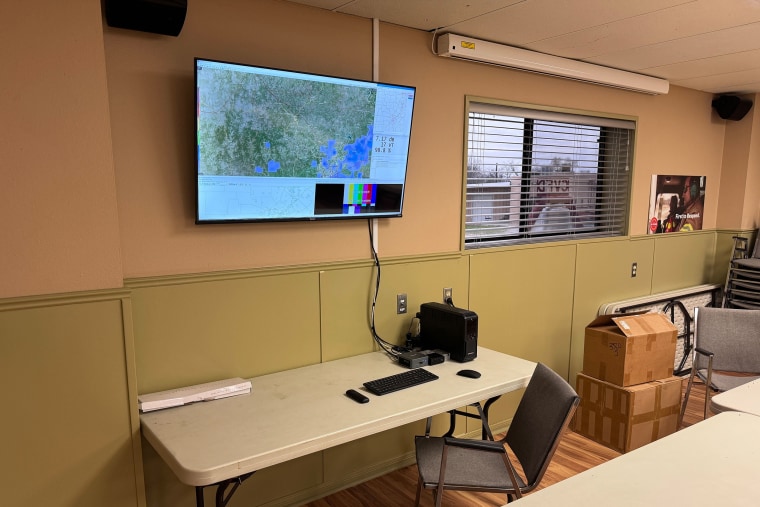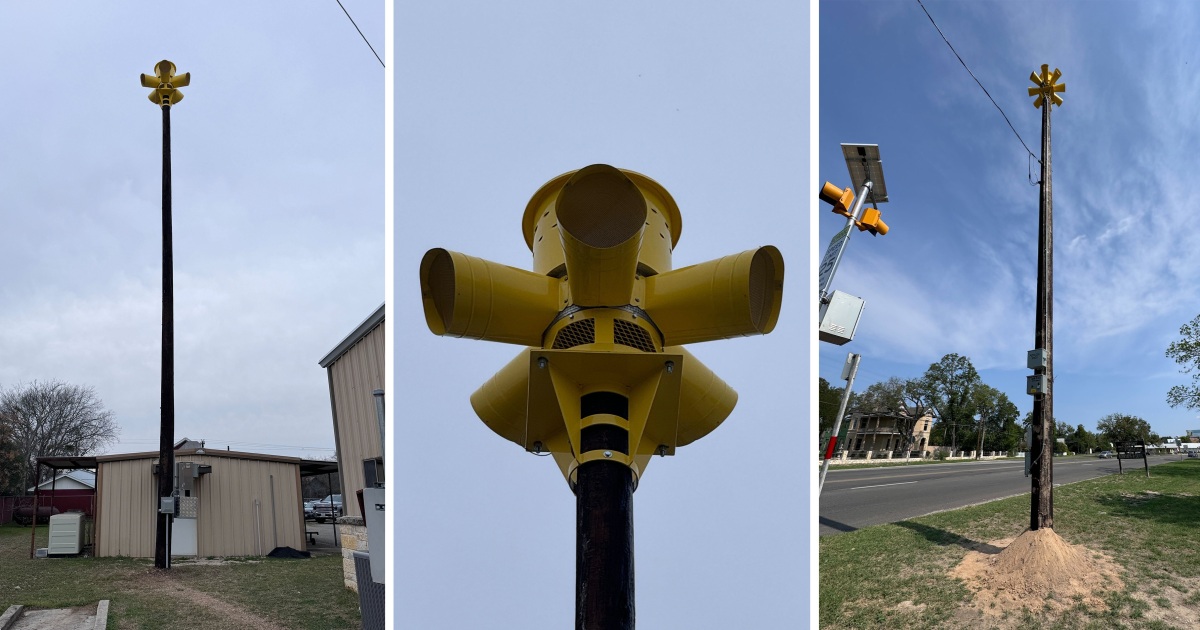As heavy rain triggered flash flood warnings along the Guadalupe River in Texas Hill Country early Friday, the small unincorporated town of Comfort had something its neighbors upriver in Kerr County didn’t: wailing sirens urging residents to flee before the water could swallow them.
Comfort had recently updated its disaster alert system, installing a new siren in the volunteer fire department’s headquarters and moving the old one to a low-lying area of town along Cypress Creek, a tributary of the Guadalupe that is prone to flooding. Friday was the first time the new two-siren system had been used outside of tests, providing a last-minute alarm for anyone who hadn’t responded to previous warnings on their cellphones or evacuation announcements from firefighters driving around town.
“People knew that if they heard the siren, they gotta get out,” said Danny Morales, assistant chief of the Comfort Volunteer Fire Department.

Morales said that no one died in Comfort, a town of about 2,300 people in Kendall County. But in Kerr County about 20 miles away, dozens of people, including young girls staying at Camp Mystic, a riverside Christian summer camp, were washed away when the Guadalupe surged over its banks and swamped the surrounding countryside. As of Monday evening, officials said, 104 people had been confirmed dead, 84 of them in Kerr County, including dozens of children. Kerr County has no siren system despite years of debate, in part because some local officials felt it was too expensive to install.
The part of Texas Hill Country known as “flash flood alley” has seen rising waters many times before, but the swift and punishing destruction over the Fourth of July has focused attention on whether local officials are doing enough to protect their residents as climate change causes more frequent and severe weather disasters and the federal government is slashing spending on emergency preparedness.
The swollen river has receded, leaving behind heartbreaking signs of the devastation: little girls’ suitcases and clothes strewn along the wrecked cabin grounds and plush toys caked with detritus, twisted metal and gnarled vehicles. Three days after the flooding, searchers were still picking through downed trees and hunting through thick black mud for those still missing. Parents’ hopes were dimming as the days dragged on with no signs of life.

It is impossible to know whether a siren system in Kerr County would have saved lives; they are meant to alert people who are outdoors, not in bed indoors, as many of Kerr County’s victims were when the river rose overnight — at one point by 26 feet in just 45 minutes.
The weather service issued a flood watch for the area Thursday afternoon and an urgent flash flood warning for Kerr County at 1:14 a.m. Friday, a move that triggers the wireless emergency alerts on cellphones.
By the time flooding inundated low-lying parts of Kendall County, where Comfort is located, it was later Friday morning. The first weather service flash flood alert for Kendall came at 7:24 a.m. When the sirens went off, many residents were already awake and aware of the dangerous flooding. A Facebook video recorded by Jeff Flinn, the managing editor of The Boerne Star, shows the emergency sirens in Comfort sounding at 10:52 a.m.; he said the alert lasted for about 30 seconds.
Kerr County was relying on the emergency alerts that blare on cellphones. Those alerts may not get through, particularly in rural areas with bad service or in the night when phones are off or when there are no phones around; the girls at the summer camp weren’t allowed to bring them. And some may choose to ignore them, because they’re bombarded by phone alerts.
Some Texas officials have blamed the National Weather Service, arguing it didn’t do a good enough job forecasting rainfall and issuing timely flood warnings. But some independent meteorologists and a former weather service official told NBC News that the agency performed as well as it could given the unpredictability of rain and flash flooding and the timing of the disaster.

Tom Moser, a former Kerr County commissioner, said he began looking into a warning system for his area after flooding in Hays County, which was overwhelmed by the Blanco River, killed 13 people over Memorial Day weekend in 2015.
Kerr County officials debated various options, including one for an alert system that included sensors and sirens, and the cost was about $1 million, Moser said.
“There were a number of people that did not like the sirens going off because they go off accidentally,” Moser said. “They didn’t want that disturbance in the Hill Country.”
At a March 2016 commissioners’ meeting, Rusty Hierholzer, then the Kerr County sheriff, was adamant that the deadly flooding in the Hays County community of Wimberley was a warning for the need to install sirens in addition to a phone app notification system known as Code Red already in use.
In Wimberley, some people didn’t get alerts on their phones, “so yes, you need both,” Hierholzer said, according to a transcript of the meeting. “You need the sirens, and you need Code Red to try and make sure we’ll notify everybody as we can when it’s coming up.”
During a follow-up discussion about the proposal that August, then-Commissioner H.A. “Buster” Baldwin questioned the flood warning system they were considering, saying, “I think this whole thing is a little extravagant for Kerr County, with sirens and such,” according to a transcript.
They estimated the system would cost $1 million, and they didn’t have the money to add it to the budget.
Moser said they also didn’t get disaster relief funding they’d asked for from the Federal Emergency Management Agency. “As a matter of fact, there were no grants available we thought we could get in a timely fashion,” Moser said.








